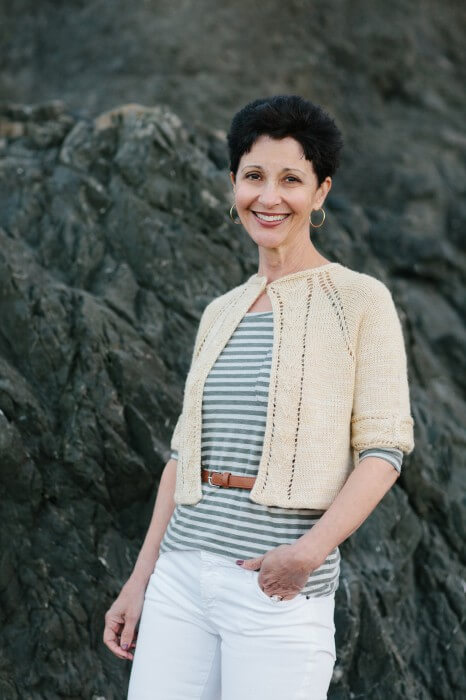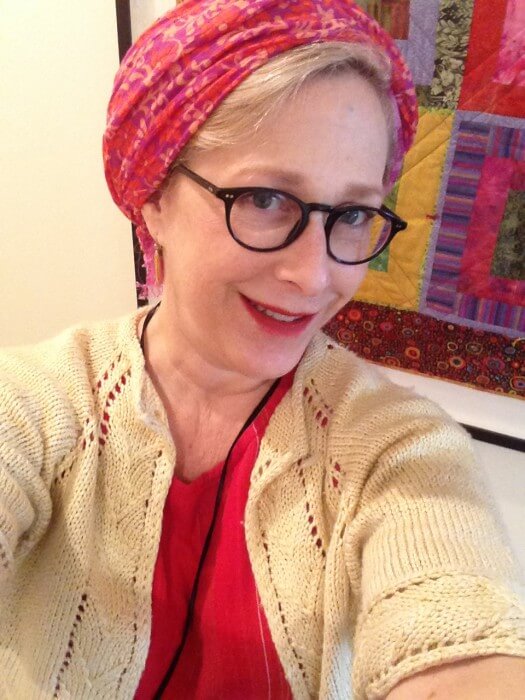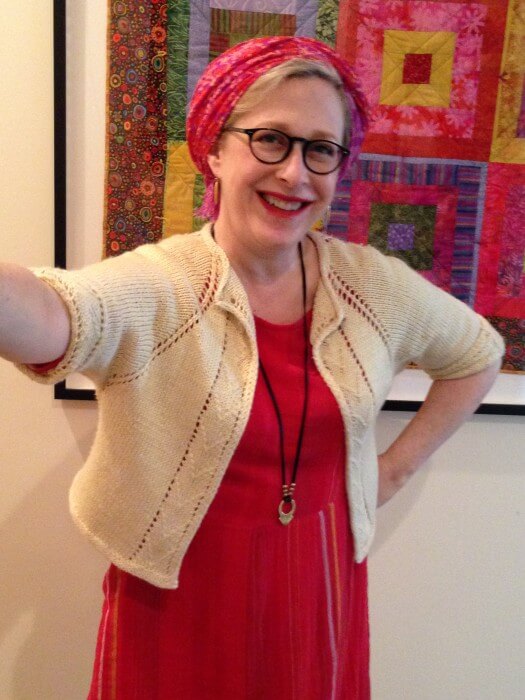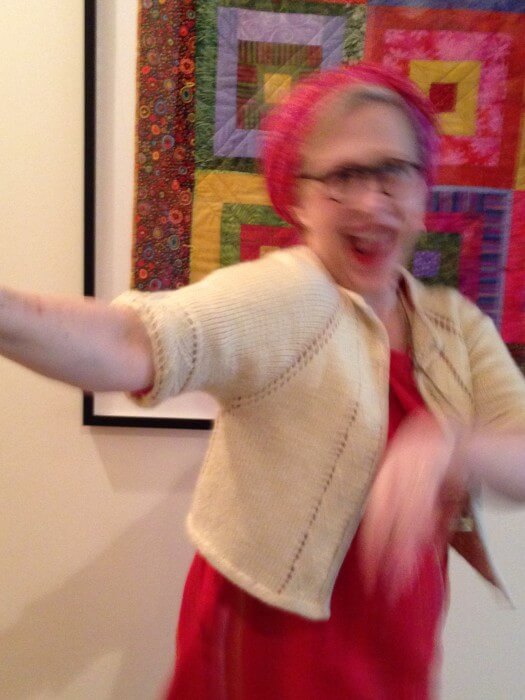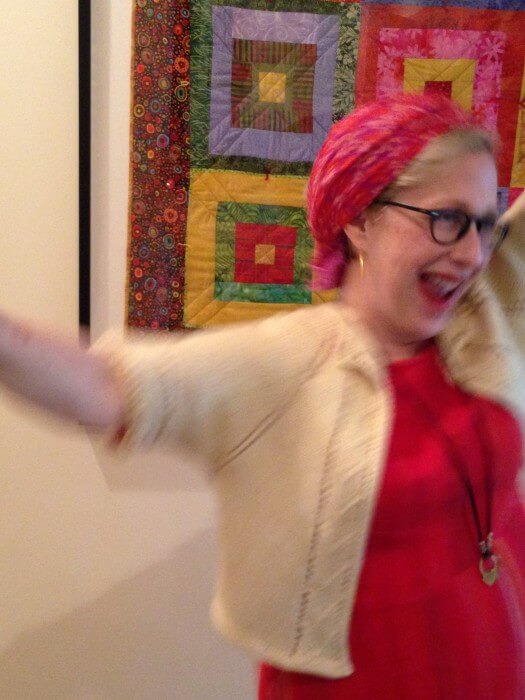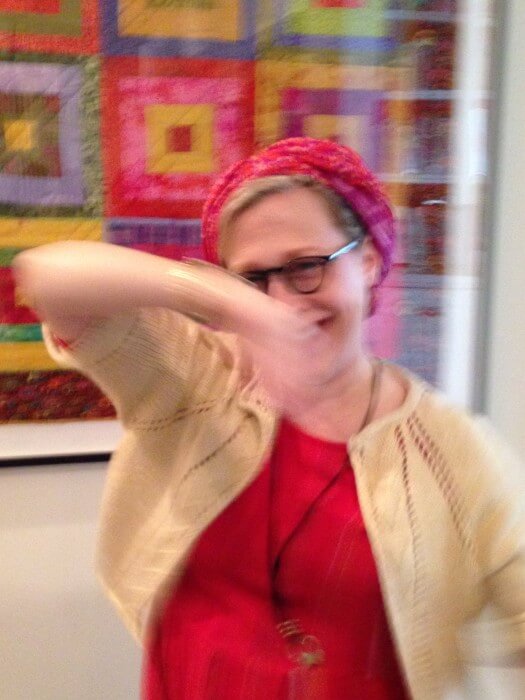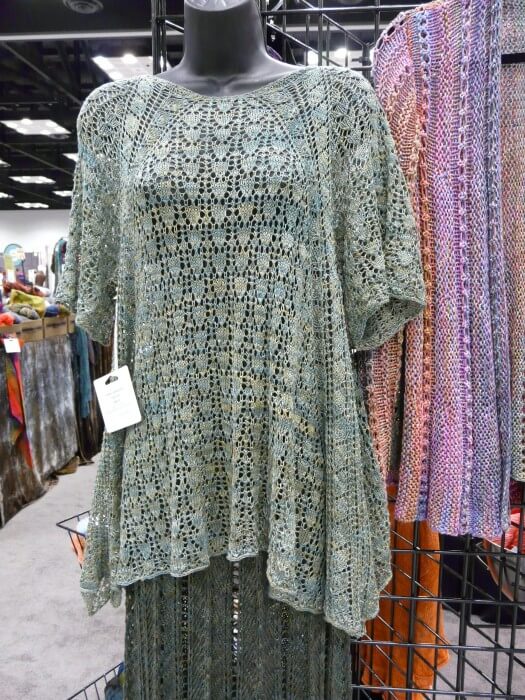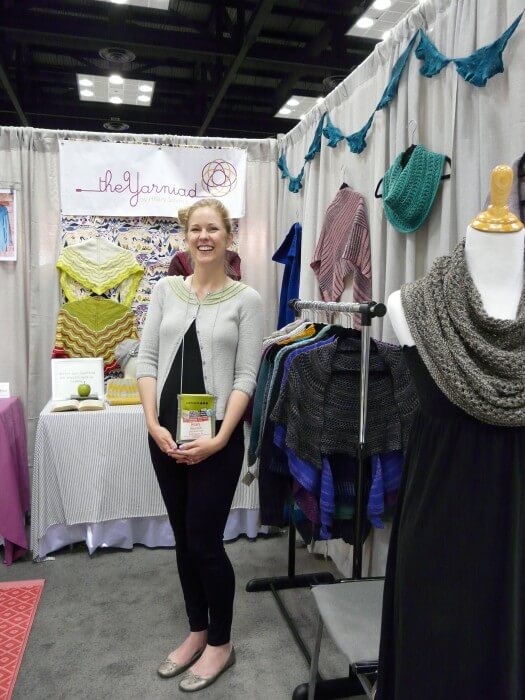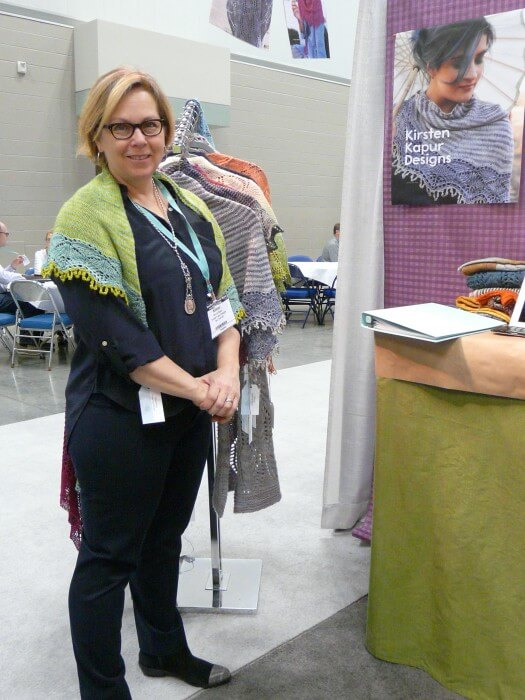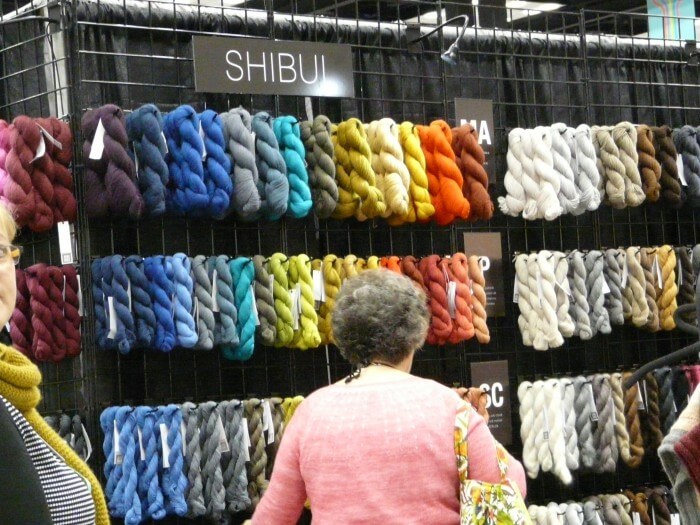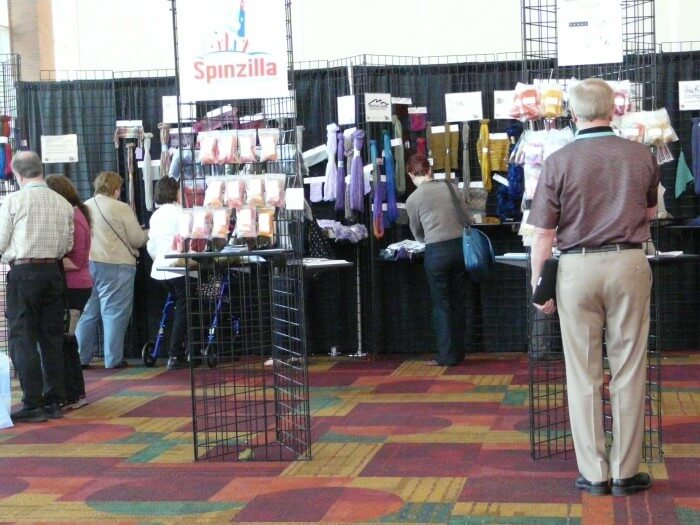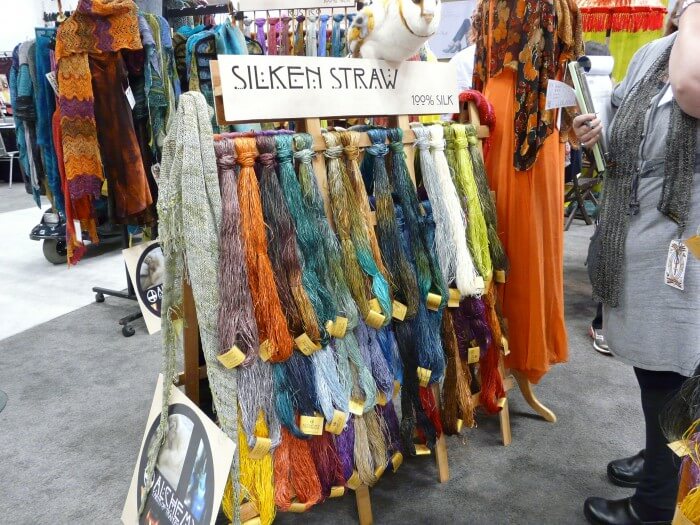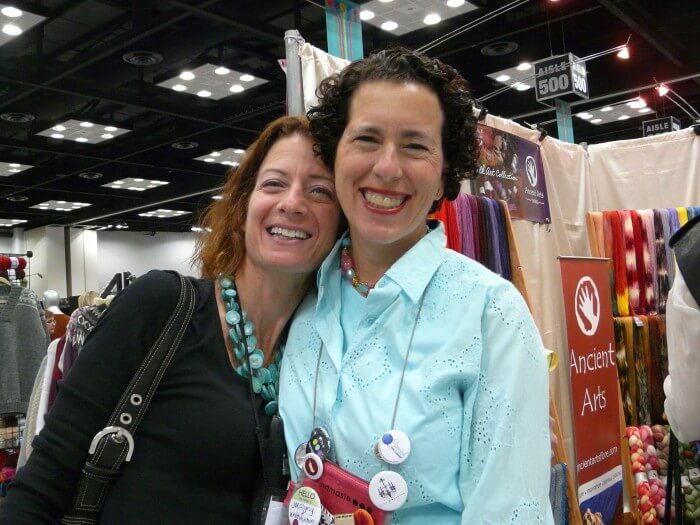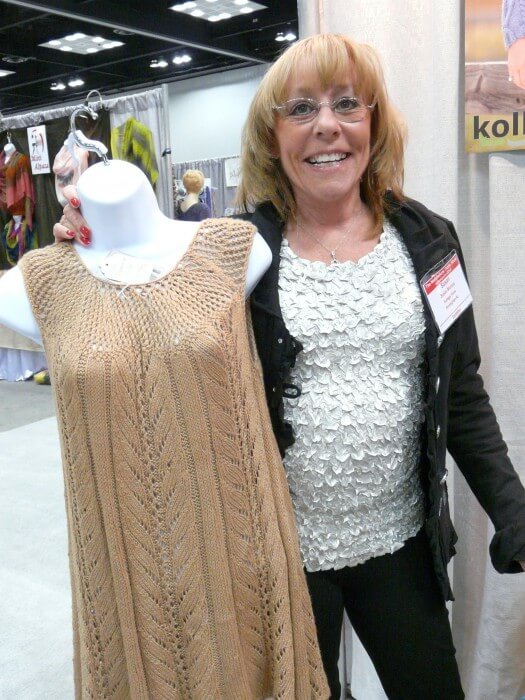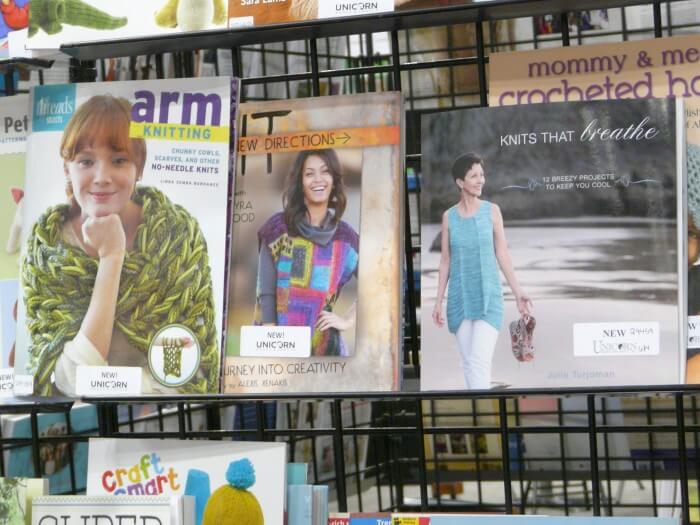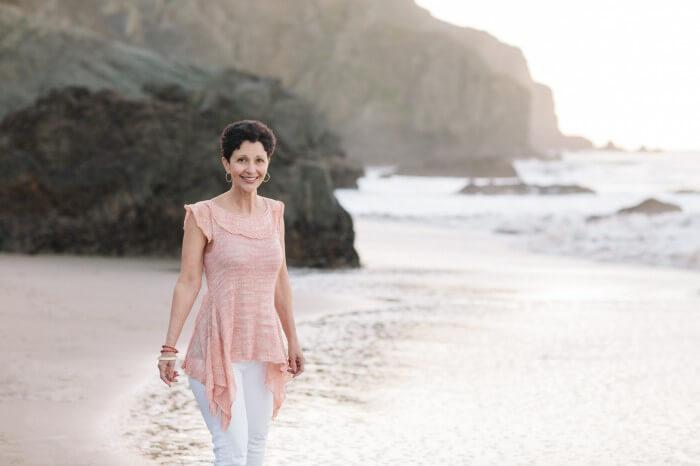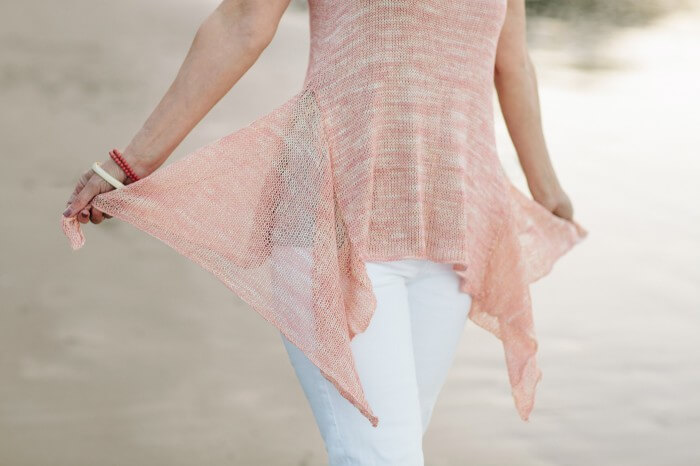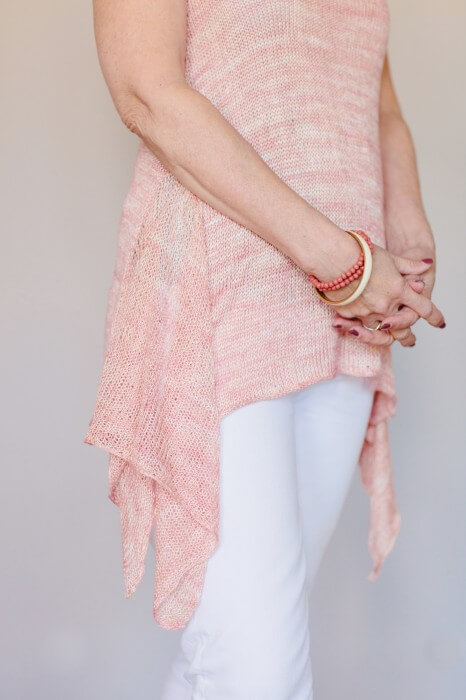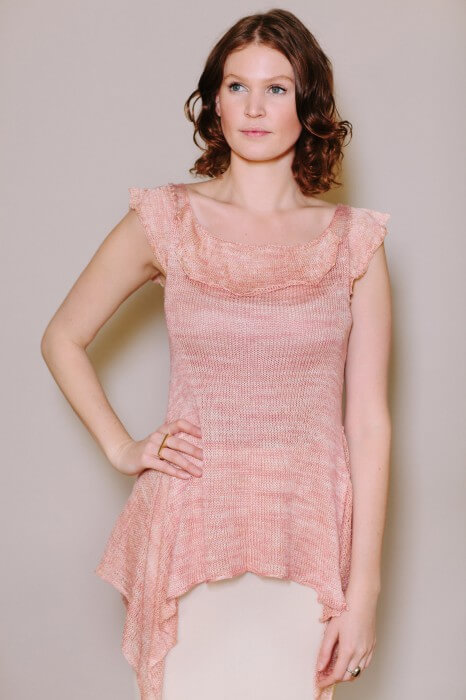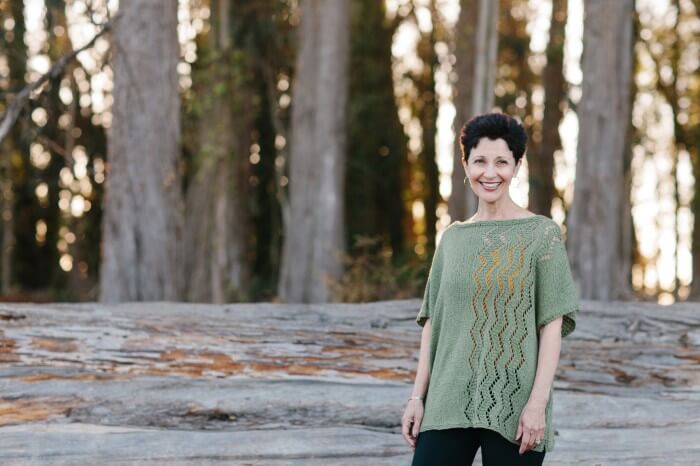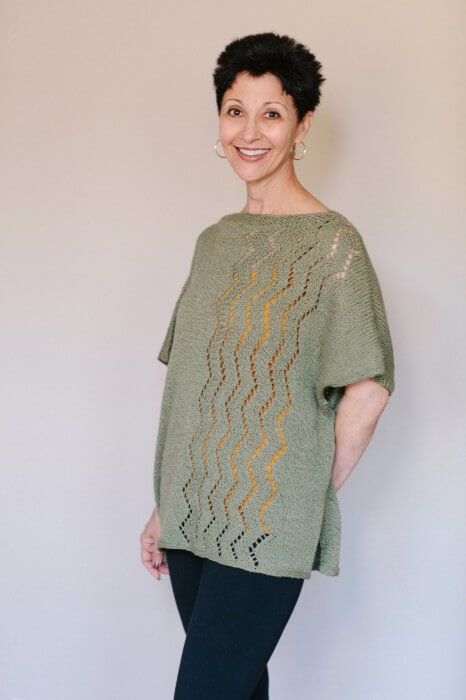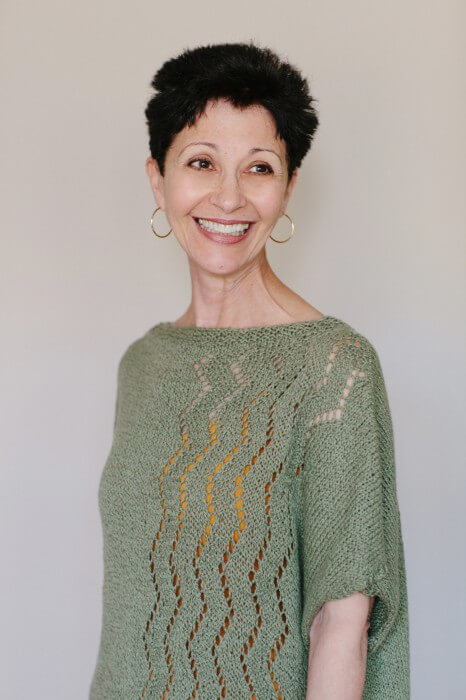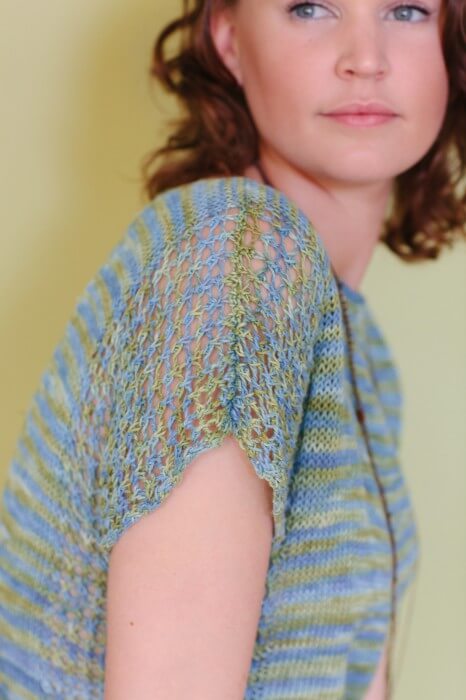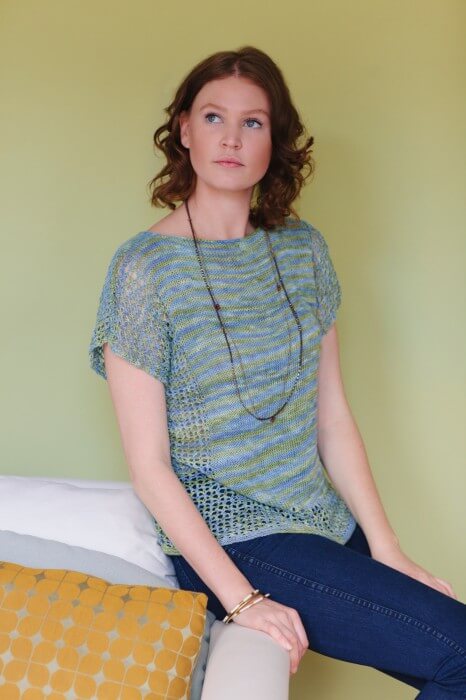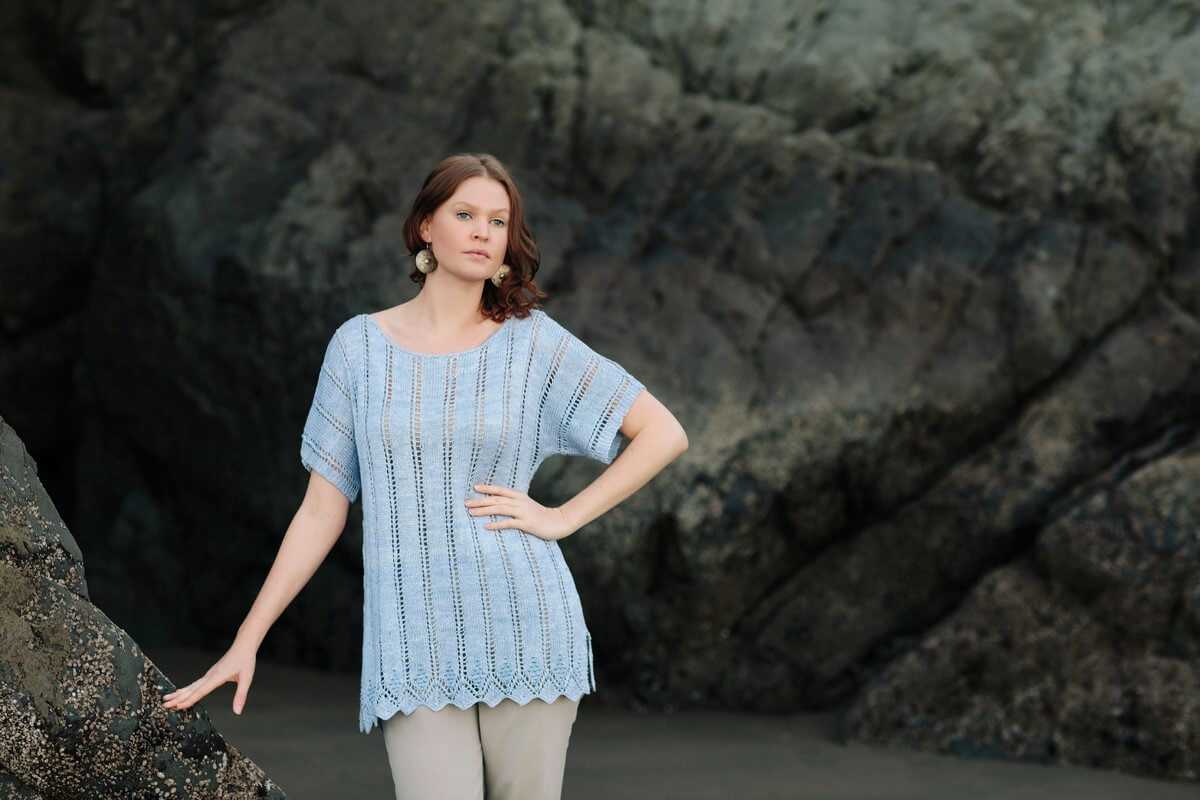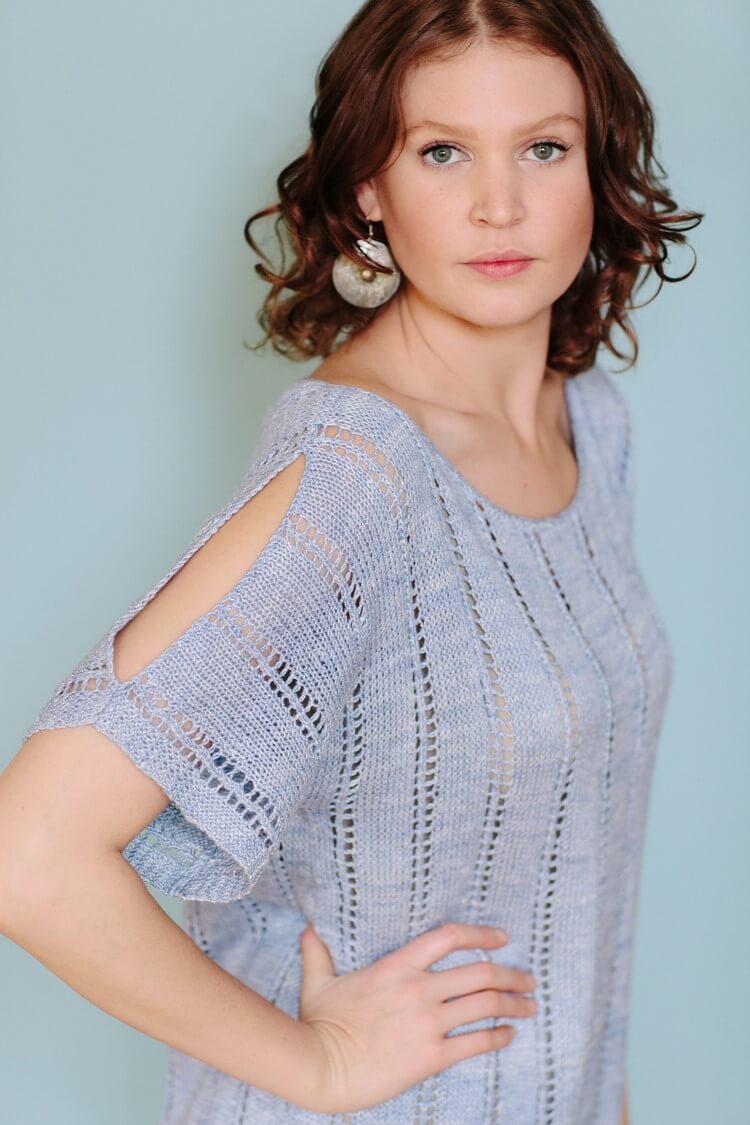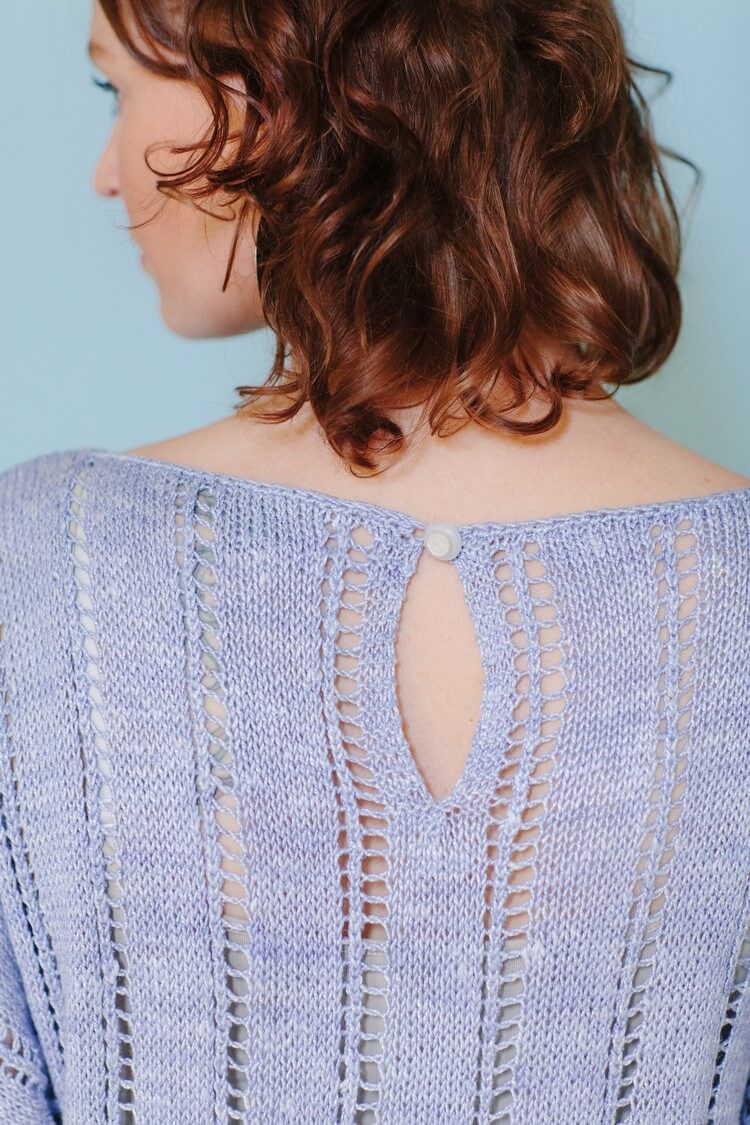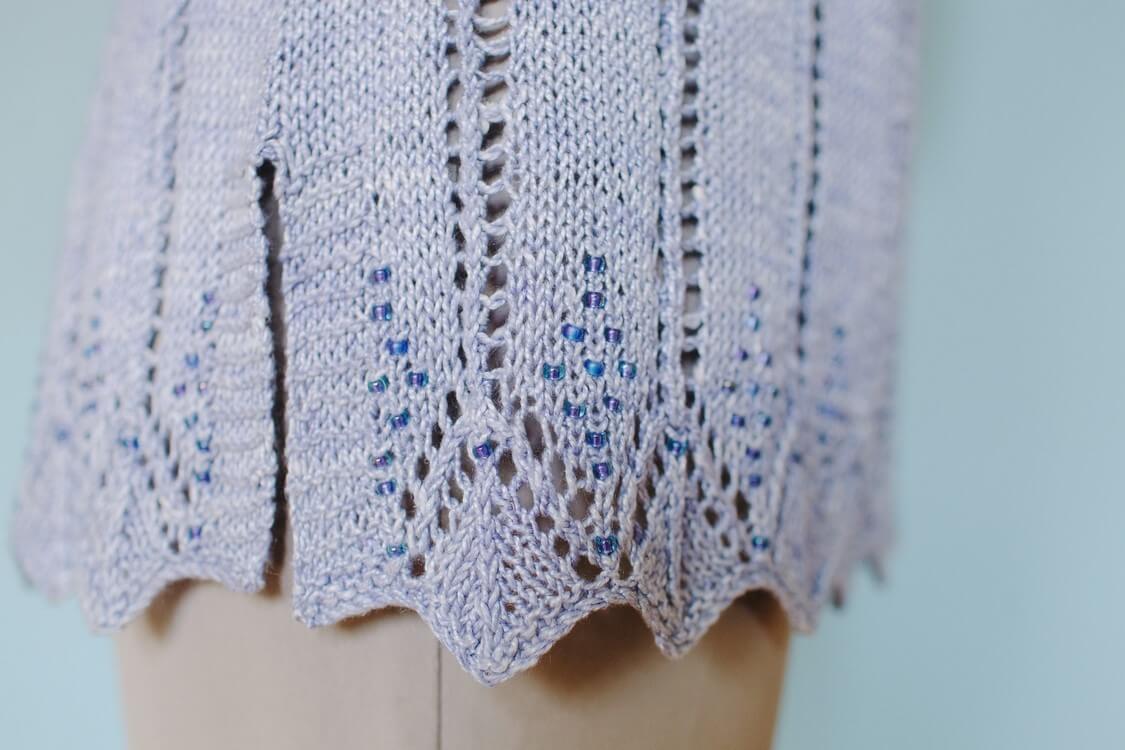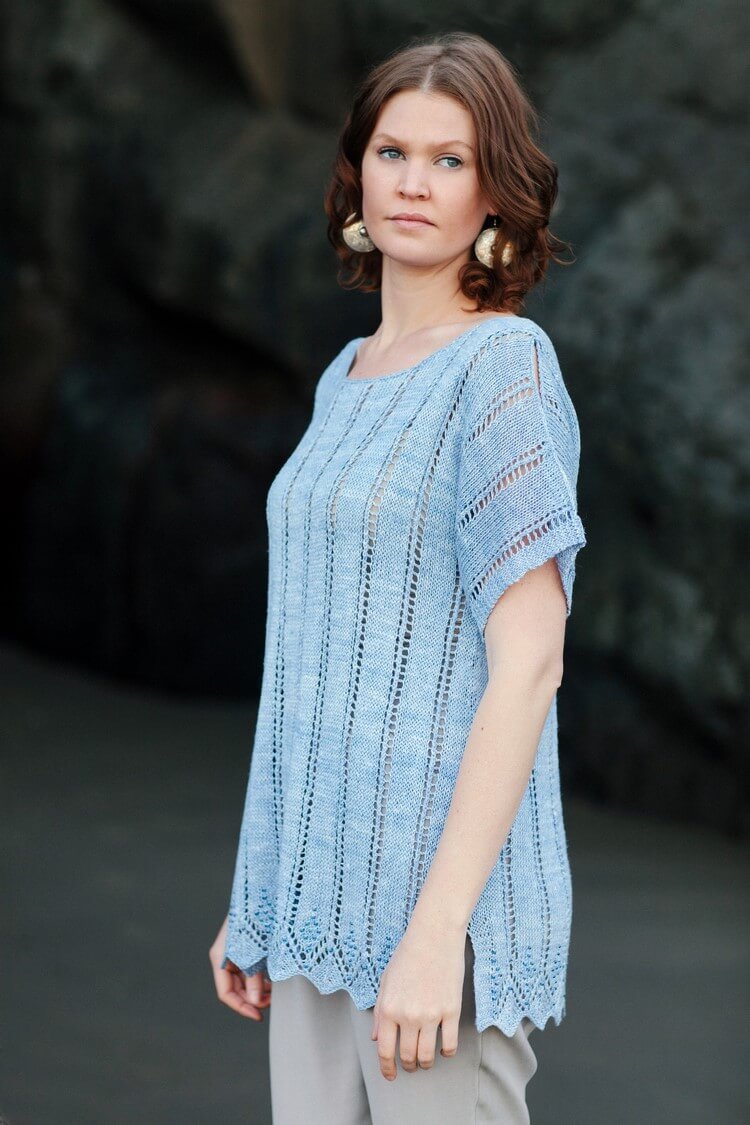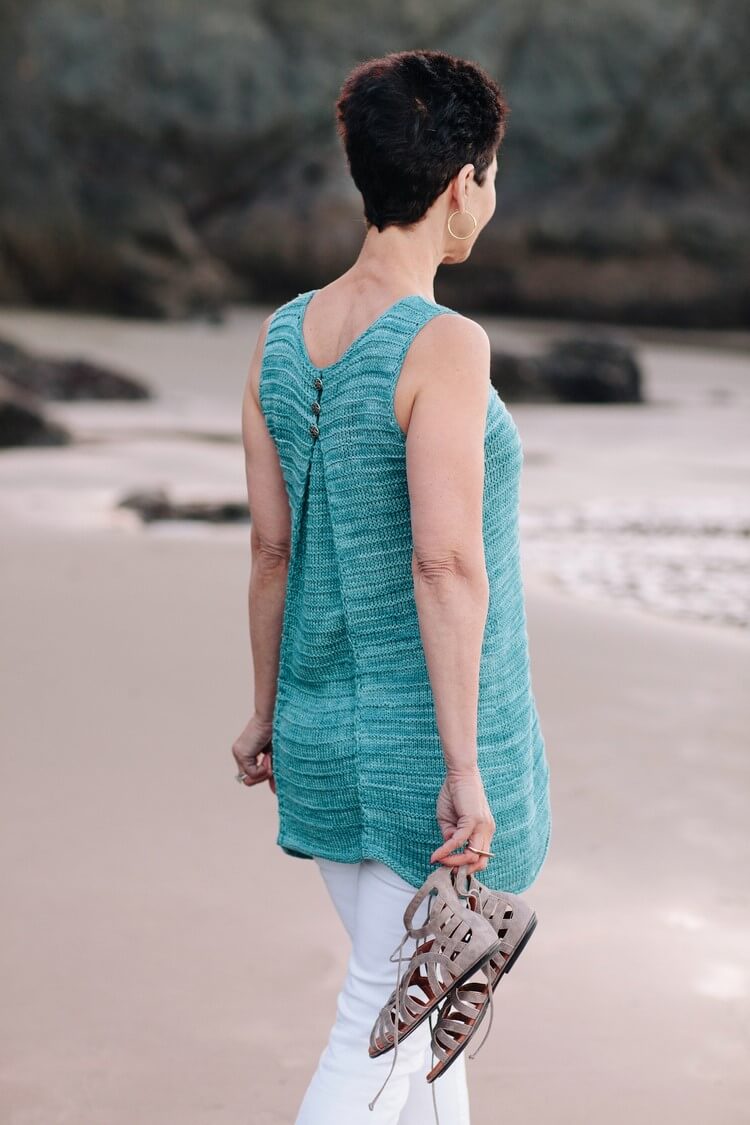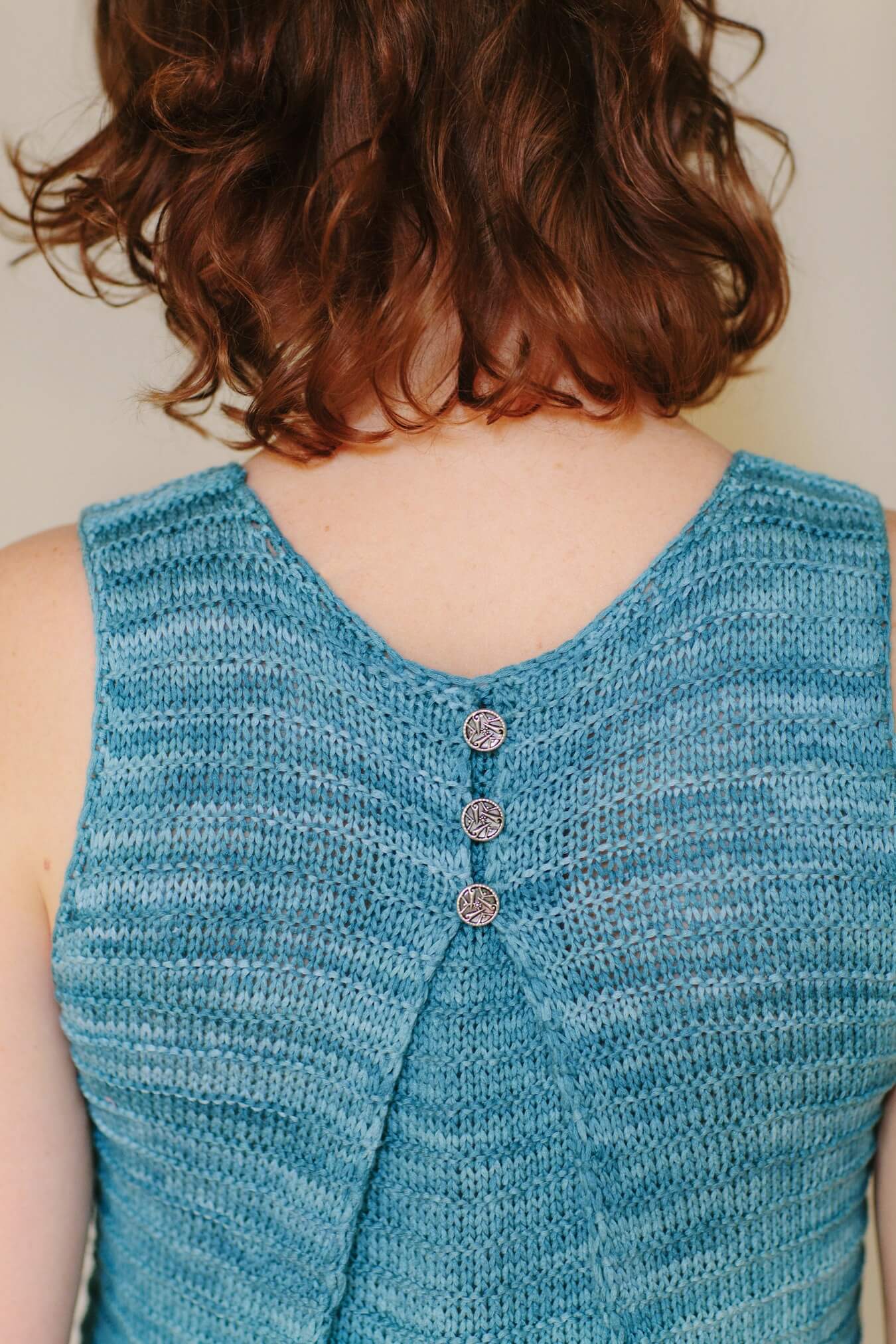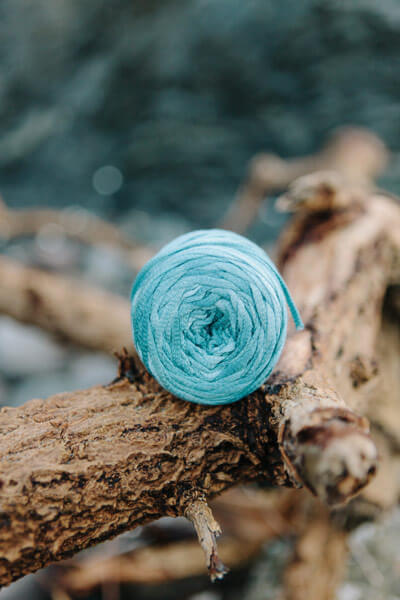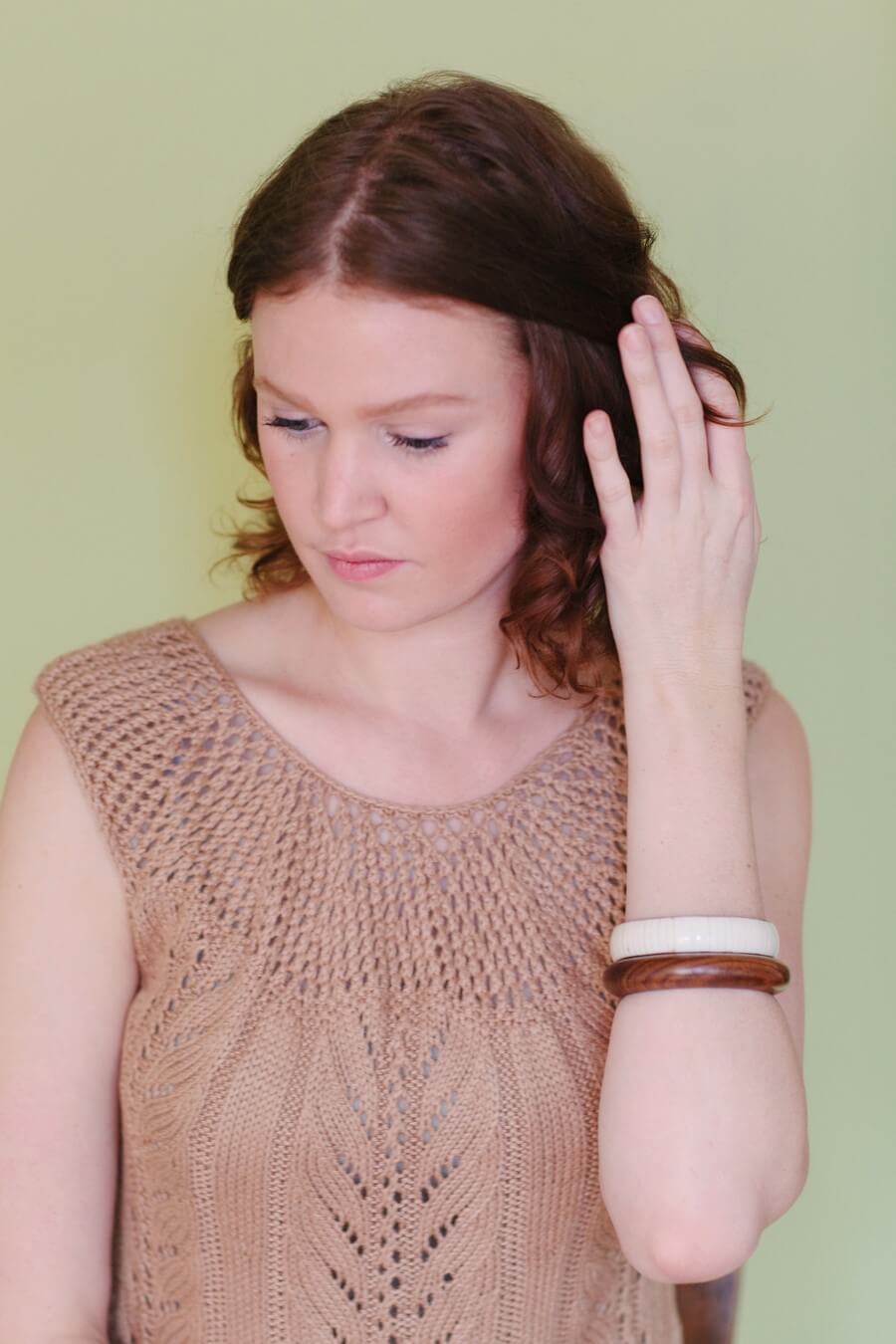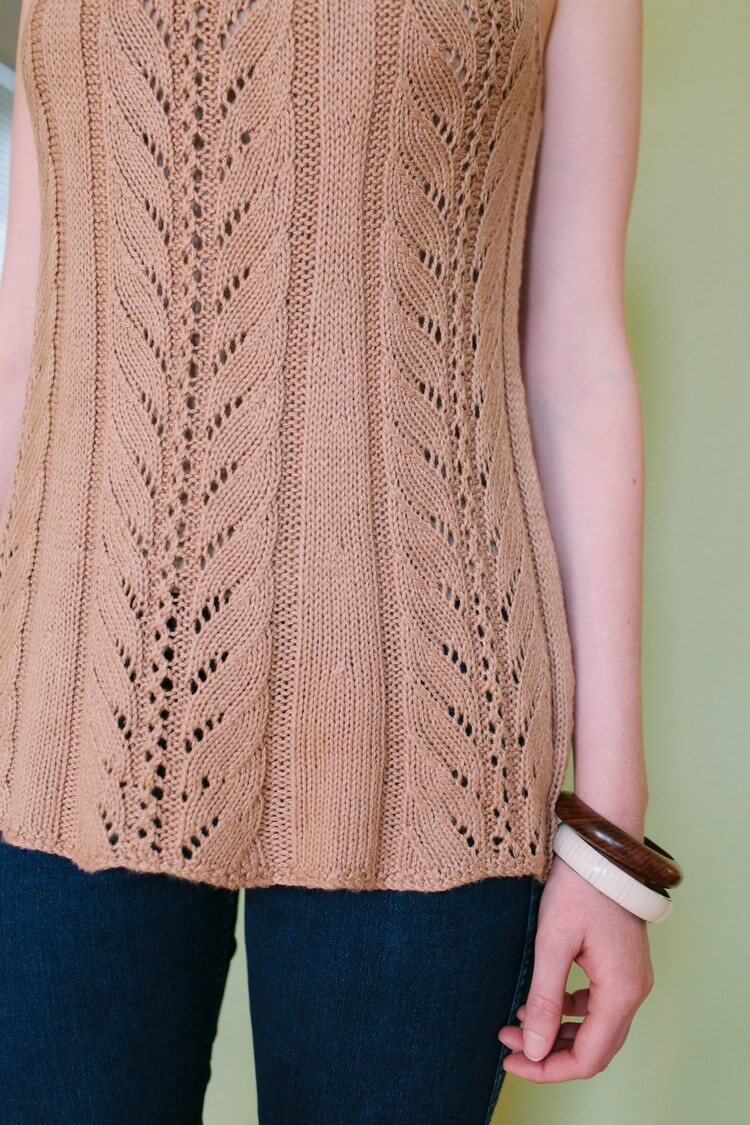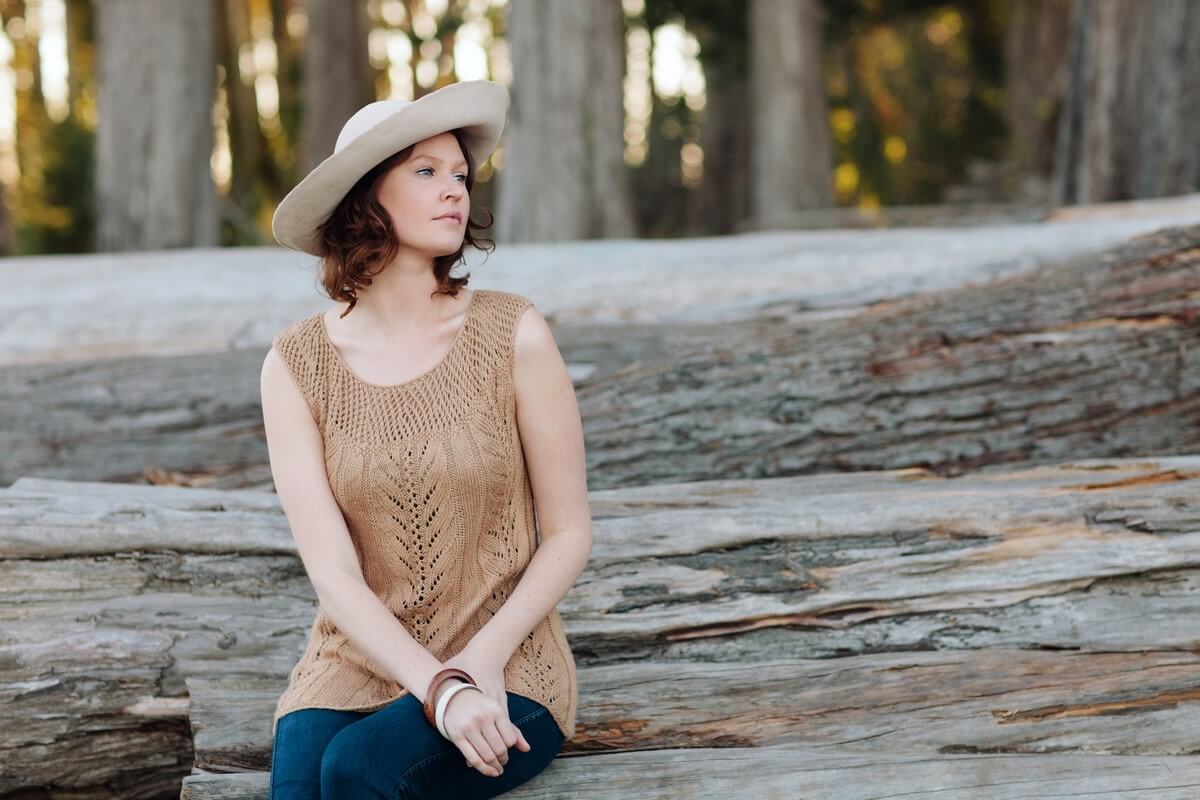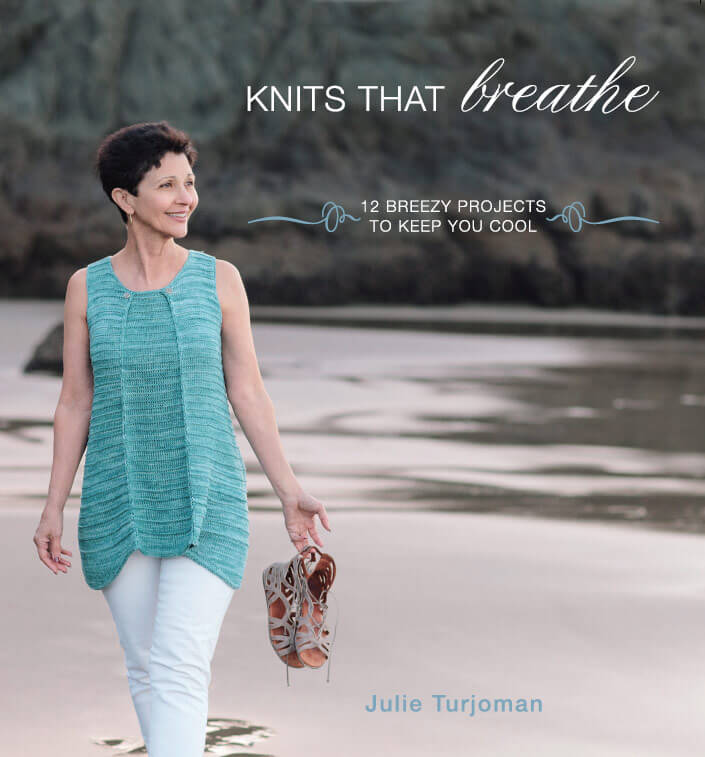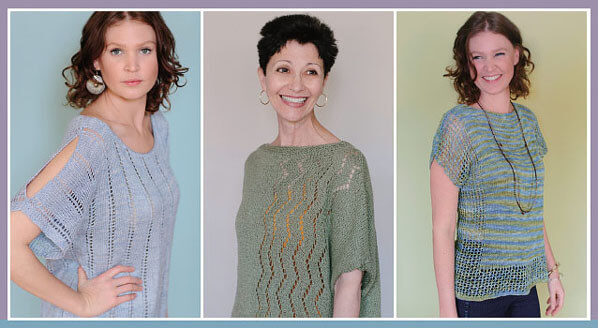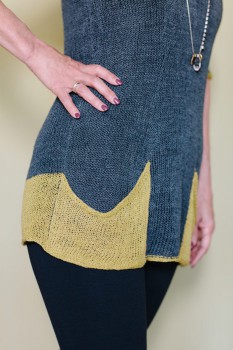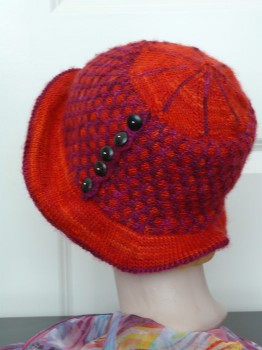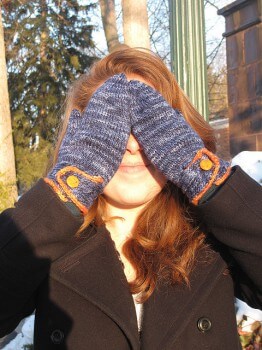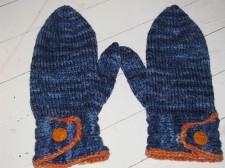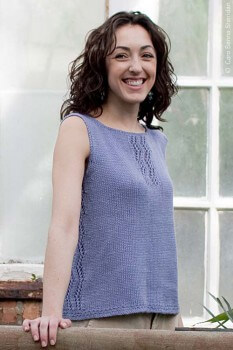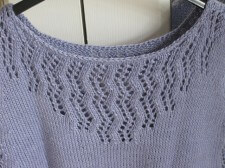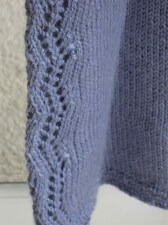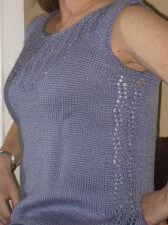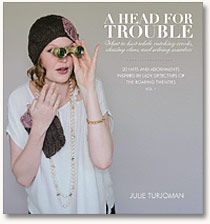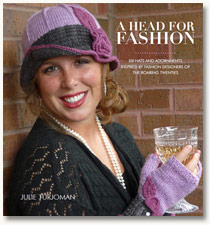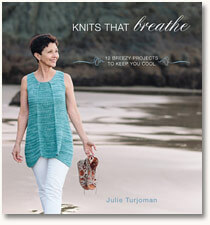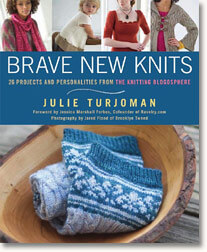I’ve been asked to provide some cost-conscious yarn substitution options for the projects in Knits That Breathe, and am glad to do so with this caveat: whenever substituting different yarns for those used in a book’s samples, be sure to make a generous swatch, block the swatch, then – and only then – verify your gauge.
An 8″ x 8″ swatch would not be out of line in this situation, because you want to be absolutely certain that the yarn will behave and perform similarly, if not exactly, like the yarn used in the original sample.
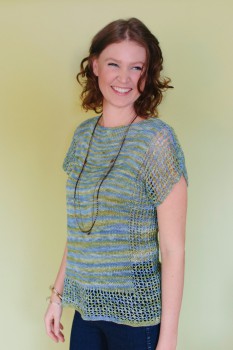
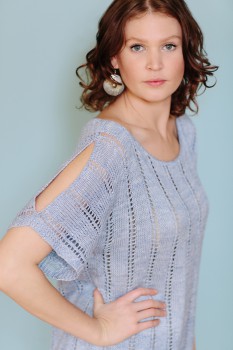
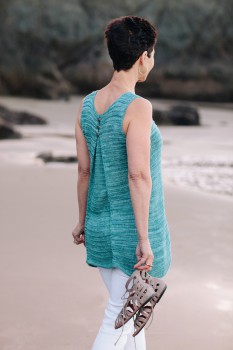
Ok, now I’ll take off my schoolmarm hat 😉 and make the following suggestions (and please understand that I have not necessarily worked with these yarns – the suggestions are based on my research about their appearance, gauge, fiber content, and the success of similar projects):
Elann Lara is a 5-ply, 100% combed mercerized cotton (sport weight); 138 yds./skein @ $2.98. I’d try this as a substitute yarn in Still Waters, Sirena, or Pochette. Elann has a Bag Blowout sale on this yarn right now, @ $22.00/bag.
Elann Lustrado is a 4-ply, 100% mercerized gassed cotton (fingering wt.); 185 yds./skein @$3.48. Try this option for Flutterbye (for a less sheer version because of the slightly heavier weight), Still Waters, Sirena, Sail Away Shrug, Zephyr, or Iced Frappuccino.
Elann Sonata Soft is an 8-ply, 100% mercerized cotton (DK wt.); 115 yds./skein @ $2.98. Try this for the Pacific Coast tunic, Splash cardigan, Sail Away shrug, Breezy tunic, Haven.
Elann Ornaghi Filati United is 55% Bamboo/ 45% Cotton (Aran wt.); 92 yds/skein @ $2.98. Try this for the Splash cardigan, Breezy tunic, or Pacific Coast tunic, Haven.
KnitPicks CotLin is 70% Tanguis Cotton, 30% Linen (DK wt.); 123 yds./skein @ $2.99. An option for Breezy tunic, Pacific Coast tunic, Splash Cardigan, Haven, or Iced Frappuccino.
KnitPicks Shine Sport is 60% Pima Cotton, 40% Modal® natural beech wood fiber (Sport wt.); 110 yds./skein @ $2.99. An option for Pochette, Sirena, Still Waters, or Zephyr.
Classic Elite Firefly is 25% linen, 75% viscose (Sport wt.); 155 yds./skein.
Classic Elite Provence is 100% mercerized Egyptian cotton; 102 yds./skein.
Classic Elite Cerro is 85% pima cotton, 15% alpaca; 150 yds./skein.
Classic Elite Classic Silk is 50% Cotton, 30% Silk, 20% Nylon; 135 yds./skein.
(See retailers for pricing; Classic Elite yarns are not as cost-conscious as those listed above, but are nonetheless a good value for lovely product.
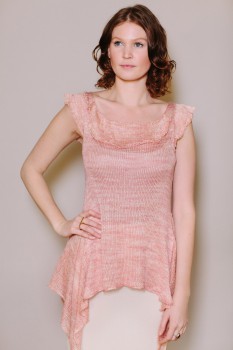
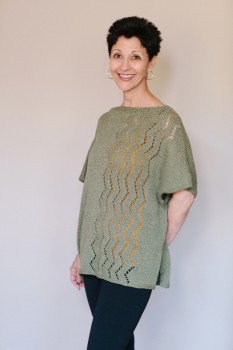
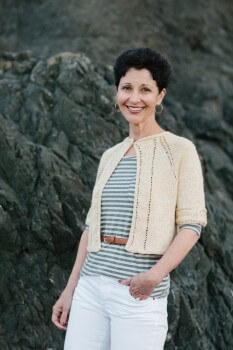
I hope these suggestions are enough to get you thinking, swatching, and making your own beautiful versions of the projects in Knits That Breathe! Please show me your finished projects!
